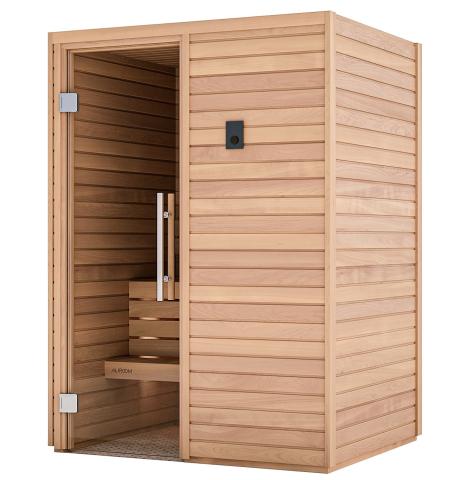Indicators on Traditional Sauna You Need To Know
Wiki Article
The Basic Principles Of Traditional Sauna
Table of ContentsThe Definitive Guide to Traditional SaunaGetting My Traditional Sauna To WorkIndicators on Traditional Sauna You Need To KnowTraditional Sauna Things To Know Before You Buy
Most of the weight lost in a sauna is water loss and is re-gained upon rehydrating. However, undeniably sauna can be an integral part of a healthy and balanced fat burning program. To look at the distinctions between conventional and IR saunas, I will separate these into verifiable, theoretical, and fabricated distinctions.Hence, the best point in the saunawhich goes to the ceiling straight over the sauna heateris commonly in between 185 and 190 F. Traditional Sauna. Claims that a typical sauna exceeds 200 F is merely not real and not suitable for electric saunas sold in the United States. The temperature for a far-infrared sauna is typically set in between 120 and 140 F; nevertheless, unlike the conventional sauna, the objective in and IR area is not to achieve a high temperature level
Due to this, the temperature level difference is nearly unnecessary, since extreme sweating causes both sauna kinds, however the method of heating the body is different. In an IR sauna the bather will certainly feel warm and will certainly sweat profusely, but at much lower temperatures. Therefore, if the objective is to spend longer time periods in the sauna, the IR sauna is a great choice.

The Basic Principles Of Traditional Sauna
When the high temperature level is accomplished, the aspects cycle on and off to preserve the high temperature level. Many typical sauna individuals appreciate putting water over the rocks to develop vapor to raise sauna moisture degrees. The advantages of putting water over the rocks consist of: making the area much more comfy, dampening the nasal passages, and permitting the use of aromatherapy by mixing necessary oils with the water.In a far-infrared sauna, the warm front penetrate the body to efficiently warm the body and raise the body core temperature. To attain this enhanced temperature, Far-infrared emitters create infrared power which is close to the same wavelength as that which the body normally emitsoften referred to as the "Crucial Variety" of 7 to 14 microns), so the energy is well received by the body.
When the power gets in the body, it creates the body temperature level to boost and eventually leads to sweating. In an infrared sauna it is necessary for the emitters/heaters to remain on nearly constantly. Considering that there is no mass of rocks to preserve warmth, the sauna will certainly cool if the emitters shut down.
As stated above, discover this the sauna bather in an infrared space wants to position himself in front of operating emitters to obtain maximum advantage from the warmth. The home heating time for both spaces can be really various, depending on how the rooms are used. For a traditional sauna, a bather ought to permit 30-40 minutes for the area to accomplish a preferred temperature and to correctly pre-heat the rocks.
Some Of Traditional Sauna
A well built sauna will generally accomplish a temperature level of 150-160 F in concerning 30-40 minutes. For hotter temperatures, the space may require to heat for a longer period.To some, 15 minutes was "thrown away" while the infrared power heated the wood panels as opposed to warming a body, while others find a pre-heated room to be a lot more comfy and believe a raised starting temperature level is required to start perspiring. The length of suggested use for every area is about the same (10-15 mins per session); nevertheless, as a result of the lower air temperatures and the capability to really feel the effects of infrared heat much faster than a conventional sauna, it is not unusual for a person to spend an overall of 20-30 mins in an infrared sauna.
Traditional saunas tend to be larger (hence use even more electrical power) than infrared saunas, although traditional saunas are definitely readily available in one and two person sizes. For a two-person typical sauna, 5x6 or over here 5x7 dimension is most popular. The leading bench can pleasantly seat 2 or 3 individuals and is likewise long enough to rest during the sauna session.


The typical cost per kWH of power in the united state is roughly $0.11, so a 4.5 kW heating system will set you back roughly $.50 to compete one hour, if the heater runs continually for one hour. Typically a sauna heating system will compete 75% of the first hour and 50% of succeeding hours on because the components cycle once the set temperature level is attained.
Not known Factual Statements About Traditional Sauna
A two individual far-infrared area is normally physically smaller than a standard sauna, usually regarding 4' x 4' or smaller sized. The IR heater is normally 1.5-1.7 kW using a 120 volt 15 amp plug-in service. Because the space can be utilized sooner than a sauna room, we will think the room is made use of for to of an hour including warm up time.Ultimately, there is a hardly ever talked about distinction in the social experience between both rooms. While our culture has shed several of the social benefit of the standard sauna experience, it can be really socially rewarding. From family time in the sauna, to heart-felt conversations with better halves, to sauna partiesthe traditional sauna experience can lead to intimate mingling.
A lot of higher visit this web-site end infrared spaces consist of colored light therapy, sound systems and full-glass fronts.
Report this wiki page